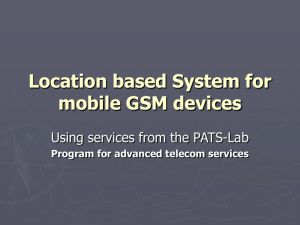The What, Who, Where, When, and How of Context- Awareness
advertisement
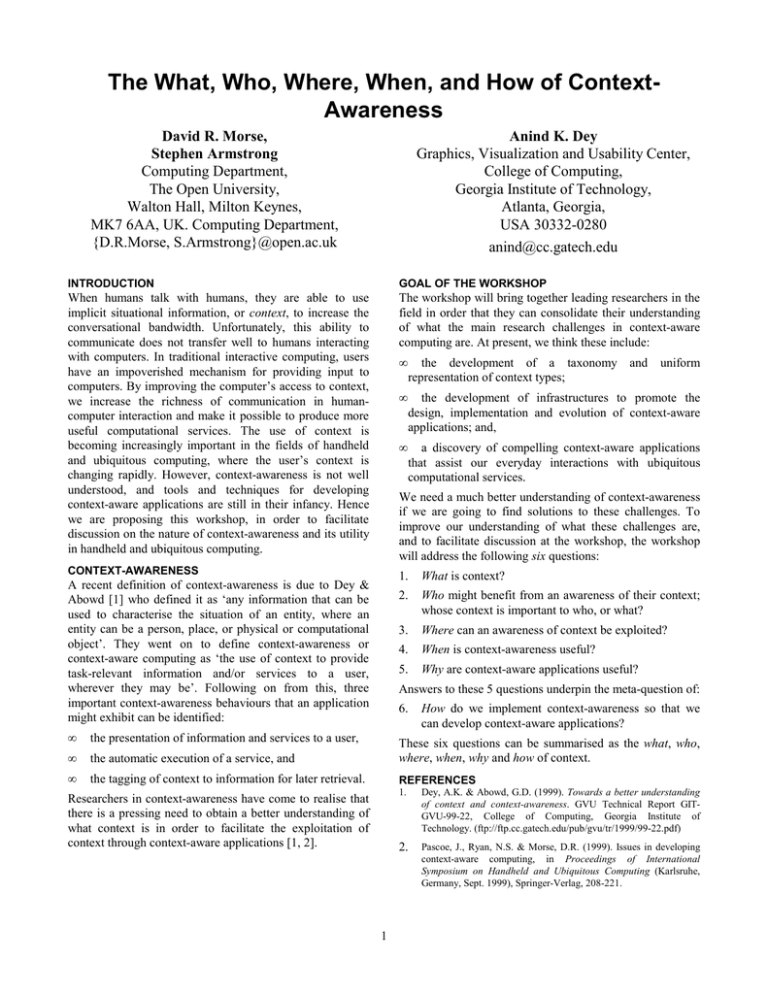
The What, Who, Where, When, and How of ContextAwareness
David R. Morse,
Stephen Armstrong
Computing Department,
The Open University,
Walton Hall, Milton Keynes,
MK7 6AA, UK. Computing Department,
{D.R.Morse, S.Armstrong}@open.ac.uk
Anind K. Dey
Graphics, Visualization and Usability Center,
College of Computing,
Georgia Institute of Technology,
Atlanta, Georgia,
USA 30332-0280
anind@cc.gatech.edu
INTRODUCTION
GOAL OF THE WORKSHOP
When humans talk with humans, they are able to use
implicit situational information, or context, to increase the
conversational bandwidth. Unfortunately, this ability to
communicate does not transfer well to humans interacting
with computers. In traditional interactive computing, users
have an impoverished mechanism for providing input to
computers. By improving the computer’s access to context,
we increase the richness of communication in humancomputer interaction and make it possible to produce more
useful computational services. The use of context is
becoming increasingly important in the fields of handheld
and ubiquitous computing, where the user’s context is
changing rapidly. However, context-awareness is not well
understood, and tools and techniques for developing
context-aware applications are still in their infancy. Hence
we are proposing this workshop, in order to facilitate
discussion on the nature of context-awareness and its utility
in handheld and ubiquitous computing.
The workshop will bring together leading researchers in the
field in order that they can consolidate their understanding
of what the main research challenges in context-aware
computing are. At present, we think these include:
CONTEXT-AWARENESS
1.
What is context?
2.
Who might benefit from an awareness of their context;
whose context is important to who, or what?
3.
Where can an awareness of context be exploited?
4.
When is context-awareness useful?
5.
Why are context-aware applications useful?
•
the development of a taxonomy and
representation of context types;
•
the development of infrastructures to promote the
design, implementation and evolution of context-aware
applications; and,
•
a discovery of compelling context-aware applications
that assist our everyday interactions with ubiquitous
computational services.
uniform
We need a much better understanding of context-awareness
if we are going to find solutions to these challenges. To
improve our understanding of what these challenges are,
and to facilitate discussion at the workshop, the workshop
will address the following six questions:
A recent definition of context-awareness is due to Dey &
Abowd [1] who defined it as ‘any information that can be
used to characterise the situation of an entity, where an
entity can be a person, place, or physical or computational
object’. They went on to define context-awareness or
context-aware computing as ‘the use of context to provide
task-relevant information and/or services to a user,
wherever they may be’. Following on from this, three
important context-awareness behaviours that an application
might exhibit can be identified:
Answers to these 5 questions underpin the meta-question of:
6.
How do we implement context-awareness so that we
can develop context-aware applications?
•
the presentation of information and services to a user,
•
the automatic execution of a service, and
These six questions can be summarised as the what, who,
where, when, why and how of context.
•
the tagging of context to information for later retrieval.
REFERENCES
Researchers in context-awareness have come to realise that
there is a pressing need to obtain a better understanding of
what context is in order to facilitate the exploitation of
context through context-aware applications [1, 2].
1
1.
Dey, A.K. & Abowd, G.D. (1999). Towards a better understanding
of context and context-awareness. GVU Technical Report GITGVU-99-22, College of Computing, Georgia Institute of
Technology. (ftp://ftp.cc.gatech.edu/pub/gvu/tr/1999/99-22.pdf)
2.
Pascoe, J., Ryan, N.S. & Morse, D.R. (1999). Issues in developing
context-aware computing, in Proceedings of International
Symposium on Handheld and Ubiquitous Computing (Karlsruhe,
Germany, Sept. 1999), Springer-Verlag, 208-221.
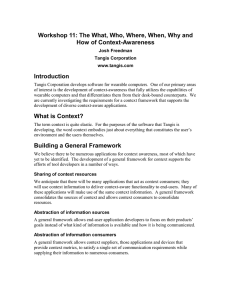
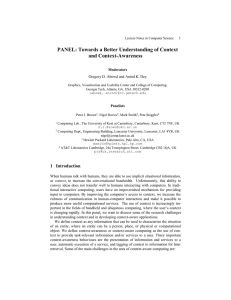
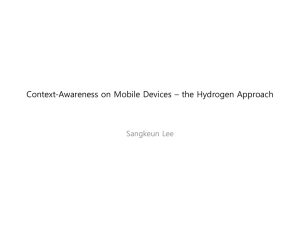
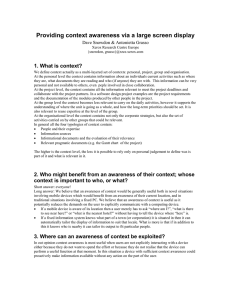
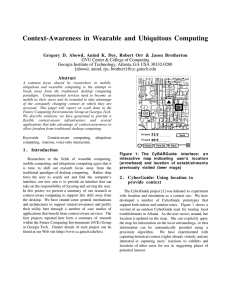
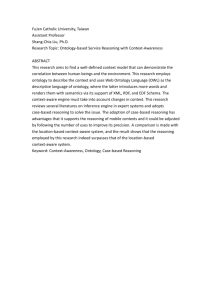
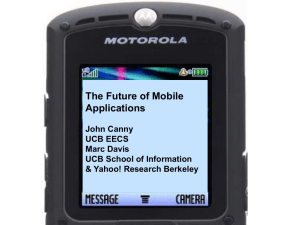
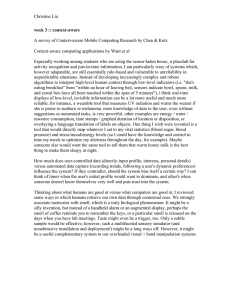
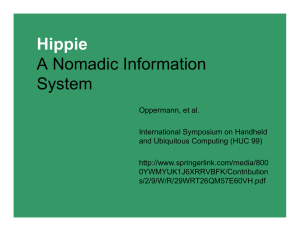
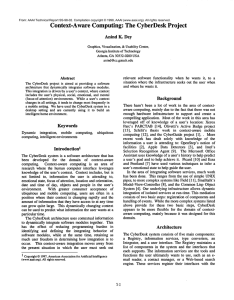
![[ ] [ ] ] <](http://s2.studylib.net/store/data/014400538_1-d15a09dea1a29a8f55d12c730758dcdd-300x300.png)
